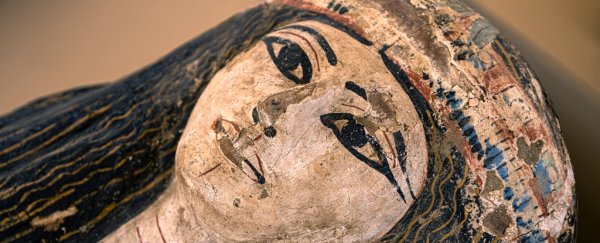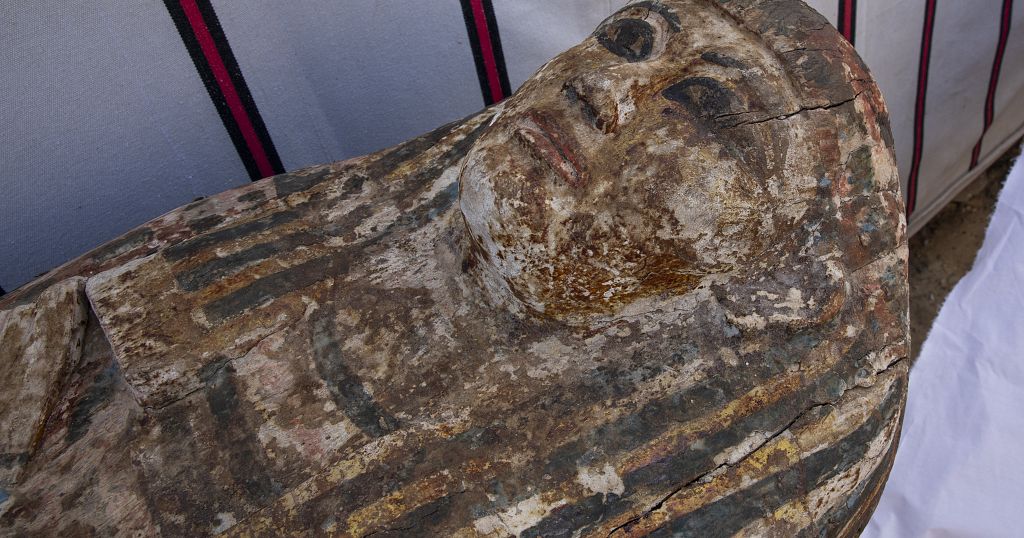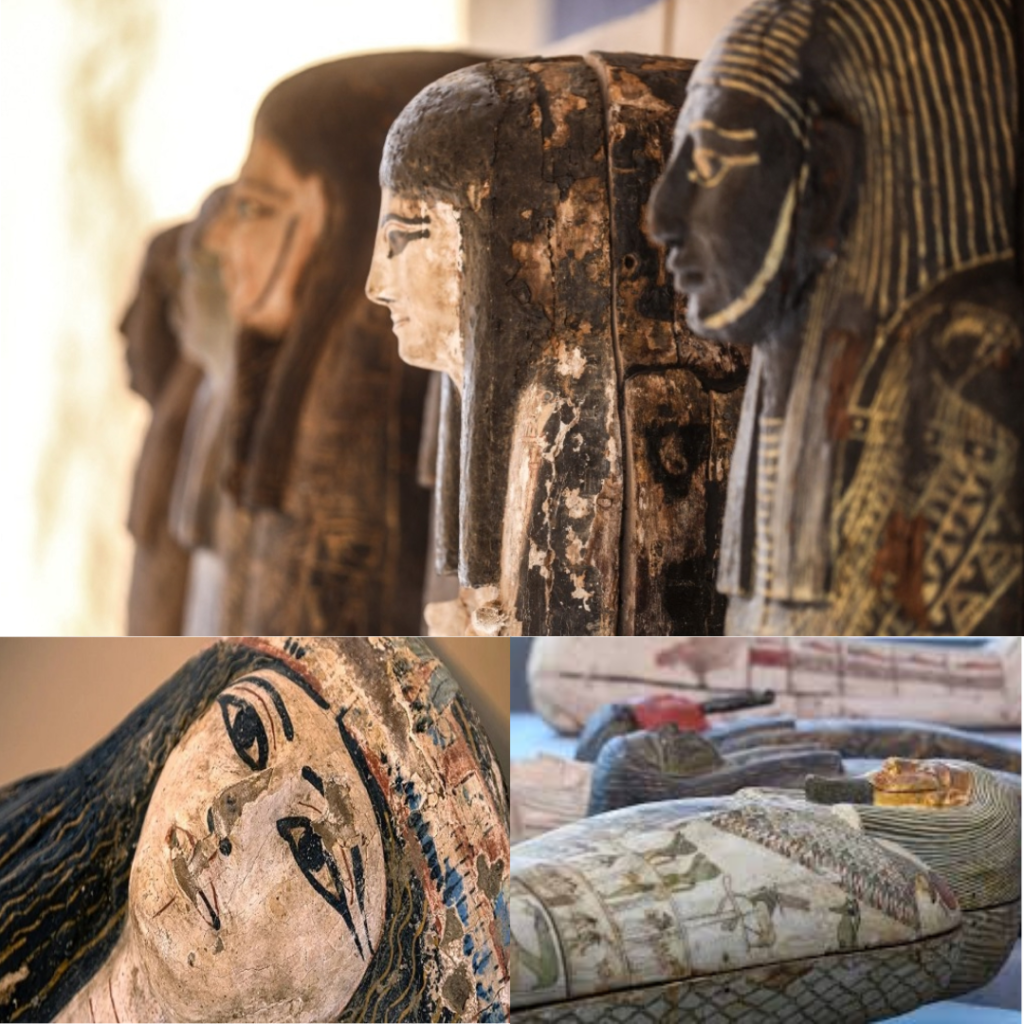On Monday, Egypt unveiled a cache of sarcophagi and bronze statuettes, including one of the pioneering architect Imhotep, at the Saqqara archaeological site south of Cairo. These artifacts are the latest in a series of discoveries made in the area.
Saqqara is a vast necropolis of the ancient Egyptian capital Memphis and a UNESCO World Heritage site. It is home to more than a dozen pyramids, animal burial sites, and ancient Coptic Christian monasteries. Among the 150 bronze statuettes unearthed in the latest findings is one of Imhotep, who “revolutionized architecture” in the ancient world, according to Mostafa Waziri, head of Egypt’s Supreme Council of Antiquities.

Imhotep, who lived in the third millennium BCE, is renowned for building the Djoser step pyramid, one of the earliest pyramids in ancient Egypt. Over time, he was deified and became the god of medicine.
Mostafa Waziri revealed the ongoing goal of the archaeological mission, which has conducted four excavation seasons in the area: “To find the tomb of Imhotep.”
Additionally, the unearthed statuettes depict various gods and goddesses, including Bastet, Anubis, Osiris, Amunmeen, Isis, Nefertum, and Hathor, according to a statement from the Ministry of Tourism and Antiquities.
The mission also unveiled “250 wooden sarcophagi with mummies inside, dating back to the Late Period,” around the fifth century BCE, Waziri said.


Inside one of the sarcophagi, the team discovered an untouched and sealed papyrus, according to Waziri. This significant find has been transferred to the laboratory of the Egyptian Museum in central Cairo for full restoration and study.
He added that the papyrus, estimated to be nine meters (9.9 yards) long, likely contains chapters of the Book of the Dead, which are collections of funerary texts composed of spells that ancient Egyptians used to guide the dead through the underworld.

The sarcophagi will be relocated to the Grand Egyptian Museum, which authorities hope to inaugurate near Cairo’s Giza pyramids later this year after repeated delays. There are high hopes that the new museum, along with the recent archaeological discoveries, will help revive the country’s vital tourism industry.
This sector has faced numerous challenges, including the 2011 revolution and the subsequent unrest, the coronavirus pandemic, and the recent halt of Russian and Ukrainian tourists, who previously made up a significant portion of the visitors.
Among other discoveries at Saqqara, Egypt unveiled five ancient Pharaonic tombs in March and announced the discovery of more than 50 wooden sarcophagi dating back to the New Kingdom, which ended in the 11th century BCE, in January last year.
Quan tài sẽ được chuyển đến Bảo tàng Grand Ai Cập, nơi mà chính quyền hy vọng sẽ khánh thành gần kim tự tháp Giza ở Cairo vào cuối năm nay sau nhiều lần trì hoãn.
